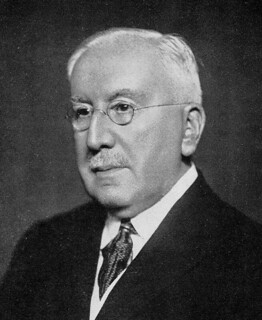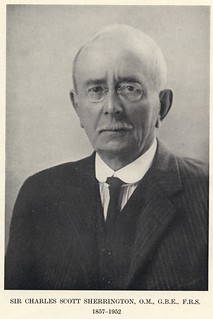- Creation
-
Creators (Definite): Sir Charles Alfred Ballance; Sir Charles Scott Sherrington; The Cambridge Scientific Instrument CompanyDate: 1889
- Current Holder(s)
-
- No links match your filters. Clear Filters
-
Cited by
 C.A. Ballance and C.S. Sherrington, 'On Formation of Scar-Tissue', Journal of Physiology 10 (6), (1889), pp. 550-578.
C.A. Ballance and C.S. Sherrington, 'On Formation of Scar-Tissue', Journal of Physiology 10 (6), (1889), pp. 550-578.
Tags: osmic acid, logwood, osmic vapour
Description:Explanation of Plate XXXI (figs. 1-5):
'Fig. 1. Contents of experimental chamber that had remained 72 hours in the peritoneal cavity of the rabbit. Five large amoeboid plasma-cells, with altered red corpuscles and apparently dead leucocytes. Outlined with camera lucida. Apochromatic oil immersion and ocular No. 4. Zeiss. Prepared over osmic vapour.
Fig. 2. Contents of a chamber for 18 hours in the peritoneal cavity (rabbit); near the centre of the chamber. Fibrin filaments, leucocytes, red corpuscles, and an ill-defined granular mass forming a nodal point in the fibrinous network-the beginning of a "cell-islet." Outlined under camera. Similar method of preparation, and similar magnification to preceding.
Fig. 3. Fragment of inflammatory membrane formed within a chamber placed for three days in the subcutaneous tissue (guinea-pig). Islets and groups of islets scattered through the membrane. Zeiss, Obj. A, Oc. 2. Osmic acid solution, and Ehrlich's logwood.
Fig. 4. Contents of same chamber as in Fig 1. Close to the opening of the chamber. Five plasma-cells, one of them continuing a leucocyte within a large vacuole. Magnification and method of preparation as in Fig. 1.
Fig. 5. Contents of same chamber. Two plasma-cells and two red corptiscles; the plasma-cells are indistinguishably united with fine filaments of fibrin in their surrounding, some of which are given in the figure. Osmic acid vapour. Zeiss, apochr. system, oc. No. 2.' (575)
Figs. 1 and 4-5 in text:
'The preparations gave an almxiost bewildering number of examples of the infinite variation in shape of the large amoeboid plasma-cells, which also varied very considerably in size, and as to granules. The body of the cell was for the most part plate-like, being in many instances extended into so thin a film that its exact limit was hard to determine, especially when, as occasionally happened, the granules of the cell-body were less pronounced towards the periphery. Some idea of the wide diversity of outline exhibited by individual cells may be gathered from our figures. Cf Figs. 1, 4, 5, 6, 7 and 8, Plates XXXI. and XXXII.' (558)
'In the specimens obtained from chambers that had rested for seventy-two hours in the subcutaneous tissue of the guinea-pig, we found individuals among the plasma-cells, which showed wellmarked vacuolation, Figs. 1, 4, 5, Pl. XXXI. For the most part the matter within the vacuole was a granular debris that furnished no sufficient clue as to its nature. But in a few it was indisputable that the vacuole contained, more or less altered but still perfectly easily recognisable, a leucocyte or red blood corpuscle. In Fig. 4 is shown the appearance presented by one of these cells. A large vacuole contains a somewhat faintly stained body, which is finely granular and indistinctly nucleated. It is a little smaller than is the nucleus of the plasma-cell itself. Fine threads seemed to pass from the sides of the vacuole across the cavity to the substance of the included leucocyte. Taken with the context afforded by examination of other cells in the neighbourhood we believe that this and other similar instances were examples of leucocytes lying in vacuoles in the plasma-cells. Many stages of ingestion could be found. Cf. Figs. 1, 4, 5, Pl. XXXI. Simple approximation, the hollowing out of a little bay in the side of the plasma-cell into which the leucocyte was as it were drawn, partial inclusion, total inclusion - all these were exemplified.' (559)
Figs. 1 and 5 in text:
'Contiguous plasma-cells or even those a little distance apart were often connected together by their processes (Figs. 1, 5, 7 and 8, Plates XXXI. and XXXII.). The bands of connection might be short thick arms or long gossamer threads of protoplasm. By similar arms and threads the cells seemed to adhere to the most diverse objects in their surrounding. The surface of the cover-glass, a filamllent of fibrin, a hair, a fibre of cotton, a lump of the cement fastening the sides of the chamber together, all afforded points to which the processes from the plasma-cells would cling (Figs. 14 and 15).' (560)
Fig. 1 in text:
'Here must be mentioned another sign of degeneration in the leucocytes examined in these chambers [note: 'Kuss, Paris, 1846. Paget, Surgical Pathol. p. 151.']. Many of them showed the triple and multiple nuclear bodies that are universally regarded as evidence of the lethal disintegration of the nucleus - as Fleming names it, the "fragmentation" of the nucleus. On the other hand the cell-body of the leucocyte was not granular or fatty, but fairly evenly though deeply tinted by the osmium. These points are seen in Fig. 1, Plate XXXI.' (556-557)
Figs. 2-3 in text:
'Eighteen Hours.- In chambers removed after the appearance of fibrin within them, but before the stay within the body had exceeded eight and forty hours, it was usual to find a number of areas in which leucocytes were present in much greater numbers than elsewhere. Fig. 2, Pl. XXXI.
The tendency to collect to certain points which the leucocytes evinced in even very early specimens was more marked in these later preparations. About the nodal points of the fibrinous network crowds of them were present. The ouitlying individuals were frequently arranged in lines along the converging filaments of fibrin. The older within certain limits these films of coagulum the more obvious the aggregation of the leucocytes into certain groups. For convenience on account of their prominence. and apparent importance in subsequent stages we have been accustomed to refer to these groups shortly as the cell-islets. Cf. Fig. 3, Pl. XXXI. They are little collections of cells, occurring constantly, scattered about in the thin cellular membranes which grow over and within the glass chambers.' (557)












